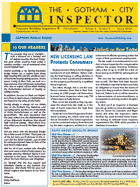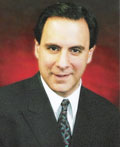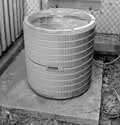- Publications:
- Newsletter:
- How-To Tutorials:
- Consumer Guides:
- Related:

Image by Robert Ubell
Publishers:
Accurate Building Inspectors ©
Division of Ubell Enterprises, Inc.
1860 Bath Avenue
Brooklyn, NY 11214
voice – [718] 265.8191
toll free voice – [800] 640.8285
fax – [718] 449.7190
Lawrence J. Ubell *
- President
Alvin Ubell **
- Founder, Vice President
Matthew Barnett *
- Senior Inspector
Estelle R. Ubell
- Sec. Treasurer
Emily Hoffman
- Editor & Broadcaster, WNYC & WQXR
Contributors:
HON. JULES L. SPODEK, (RET)
Robert H. Wolff, Esq. of Rosenberg,
Minc, Falkoff
& Wolff, LLP
Ari Saltz, of GFI Mortgage Bankers, Inc.
Stanley Turkel, MHS, ISHC
Bertrum Herman, Esq.
Howard Kurtzberg, Esq.
* Licensed in: New York - New Jersey
** Licensed in: NJ
Contribute:
If there is a subject that you would like to see discussed or an article that you would like to contribute to be featured
in The Gotham City Inspector©, please forward your comments to:
Letters to the Editor
Media Notice: The publishers, grant reprint permission of all articles in the Gotham City Inspector© Newsletter, provided that appropriate written recognition is given to the authors and “The Gotham City Inspector©”. For online reprints, please also include an HTML link to The Gotham City Inspector© : www.accuratebuilding.com

The Gotham City Inspector©
Newsletter: March 2006, Vol.4, No.2

![]() Gotham City Inspector Newsletter
Gotham City Inspector Newsletter
Spring Headlines:
- • Inspecting The Inspectors
- • Understanding Tort Law
- • Green Energy Tax Incentives
- • Lot Line Windows
- • Recipes For Home Repair Launches
- • Revisiting The Brooklyn Bridge
New York Living
Inspecting the Inspectors:
New Licensing Law Protects Consumers
Buying a home is likely to be the biggest investment of one's lifetime. Before making the final buying or selling decision, it is critical to have a professional evaluation on the property performed by a qualified home inspector.
Too often, though, this is not the case. Recent estimates show that in New York, as many as 2,000 people call themselves licensed home inspectors when only 750 of them have actually license.
Now, a new law should, as they say, separate the wheat from the chaff, or, in the case of home inspectors, the legit from the wannabees.
Under the new Home Inspection Professional Licensing Act, which went into effect on December 31st, home inspections must be conducted only by those licensed by the state, engineers, architects or code enforcement officials operating within the scope of their government employment.
The law makes it a misdemeanor to conduct a home inspection for compensation without the proper licensing. Violations carry a fine of up to $1,000 for a first offense and up to $5,000 for subsequent offenses.
The new law has implications for realtors as well. The New York State Association of Realtors says that brokers now have an obligation to ensure that the names of inspectors they provide to clients must be licensed. Failure to do so will be viewed as a demonstration of untrustworthiness or incompetence, and may result in disciplinary action.
To find out if an inspector is licensed, you can go online to www.dos.state.ny.us, click on Search for Licensees and Registrants', and enter the inspector's name. Another tip: most licensed home inspectors belong to national home inspector organizations like ASHI, which provides a database of members.
Attorney Corner

Understanding Tort Law
by Mitchell Kessler, Esq.
THE TERM “TORT” comes from French Law, (avoir tort = “to be wrong” or “to have wronged somebody”) and is the concept of civil (as opposed to criminal) wrong.
TORT LAW IS often called “the last bastion of Common Law”, which traces its history back to the Norman Conquest in England in 1066. That's when feuds between families over disputes (usually about land) had to be stopped by some resolution, so courts were developed to resolve these disputes. If the plaintiff was successful, the defendant paid not only the plaintiff but the King as well. Arguments or disputes were brought to agents of the King for resolution to end a “breach of the King's peace”.
TORT LAW'S RECOGNITION as a separate category involving negligence did not emerge until the 18th Century. After the American Revolution, the courts of the new United States of America adopted English Common Law until it was ultimately modified to reflect local customs and local statutes.
THE PURPOSE OF Tort Law today is essentially the same as it was when it first began: to bring peace where there is a dispute between private parties. Tort Law involves the principles of justice, compensation, shifting and the burden of loss, and prevention of future injuries.
THE MAJOR AREA of tort law is made up of four basic principles: (1) duty; (2) breach of duty; (3) causation; and (4) damages. When an individual owes a duty of care to another individual, he can't, for example, knock someone over or leave a hazard in one's home that would cause visitors to trip, or fail to maintain a building so that it falls down. When that duty is breached, it gives rise to liability, which is the injury upon which a jury could place a monetary value. There must be causal link between the duty that is breached and the injury. I often tell clients that it does not matter whether a defendant ran a stop sign a hundred times. If, in the civil justice system, the defendant never hit anyone, then there is no lawsuit.
IN THE CONSTRUCTION field, torts may arise out of negligent conditions of sidewalks and buildings. There could be a raised or broken sidewalk, for which a property owner may be liable. There could be a weak staircase which collapses. There could be a broken gas main in a house resulting in an explosion.
ANY NUMBER OF conditions can cause an accident. However, in order for these to give rise to liability there must be a breach of a duty by the owner of a building, equipment or entity. The owner of a building, entity or device is not always under a duty. He must first have notice of the condition, which gives rise to liability. Notice means that in the course of exercising reasonable care as a building owner or a homeowner, the proposed defendant either knew or should have known about the dangerous condition. Obviously, someone knows of the condition if they are told about it, if they have received written notice about it, or if they have seen it directly. They can actually create the hazard by a flawed attempt to repair or build or alter or mis-design it. But what about this “should have known” aspect? If, for example, routine maintenance and inspection should have disclosed the problem, then the defendant “should have known” about it.
“ACTUAL NOTICE” IS when one sees the hazard or was told about it. What we call “constructive notice” occurs when one would have been expected to see it because of routine inspections. If such a breach of a duty causes injury, then there is liability on the part of the building owner or entity or building manufacturer, repairer or mechanic.
IT IS THE basic conviction of our civil justice system that if one causes injury to another through negligence, meaning the failure to act reasonably, then the loss resulting from that injury should be shifted from the person who was injured, to the person or entity who caused the injury. This means money damages are paid by the wrongdoer to the one wronged.
Mitchell Kessler, Esq. has been a practicing attorney in New York State for the past 22 years, exclusively in the area of Personal Injury Tort Law. He has worked for several prominent personal injury law firms and for the past 12 years, in his own practice.
Mitchell has tried cases in all five boroughs of the City of New York, plus Nassau, Suffolk and Westchester Counties. He has also argued appeals in all New York Metropolitan area Appellate Courts, as well as the State's Highest Court, the “New York State Court of Appeals”. Mr. Kessler is also the author of “May it Please the Court, a Lawyer's War Stories”
Energy Wise

A Green Light: Green Energy Tax Incentive
On the average, a homeowner who upgrades a residence from window box air conditioners to central air increases their property value by as much as 10%. That alone could encourage one to “go central,” but now there's even more of an incentive. On January 23, 2006, the Department of Energy issued new manufacturing standards that will improve the energy efficiency of several common household appliances, including central air systems.
The new standards are predicted to save the nation 4.2 quads (quadrillion British Thermal Units) of energy over the next 25 years. This is equivalent to the energy consumed by nearly 26 million American households annually. The standard is also expected to save consumers $1 billion over the same period.
Energy conscious consumers can expect to slash their tax bill, thanks to new energy efficiency tax credits that went into effect on January 1st.
For example, consumers who purchase the most fuel-efficient vehicles could reduce their tax liability by up to $3,400, while those who install energy-efficient windows, insulation, doors, roofs, and heating and cooling equipment in the home can receive up to $500 off of their federal tax bill. For more details, go to: www.energytaxincentives.org
Inspector's Diary
Lot Line Windows: When A Window Is Not A Window
When is a window not a window? When is a room not a room?
When is the value of your home potentially in jeopardy because of it?
The answer to all of these questions involves lot line windows. These are the windows that are on the side of a building that is on the lot line, or property line. Sure, these windows have glass (although it has crosshatched screening embedded in glass which is a tell tale sign of lot line windows) but the “view” might not be permanent. If the neighboring building is built higher than the lot line window, it's no longer a window, it's a wall.
When this happens, it presents a problem. The room you thought was a bedroom (though technically it may never have been a bedroom at all) is now a closet. The building code requires that there be a 10% window to room area ratio in certain rooms, like bedrooms. And not only bedrooms: If the only window in your kitchen is a lot line window, plan on eating lots of take-out because you could find yourself in an apartment with no kitchen.
Always be aware if the property you want to buy has lot line windows. Learn how to analyze what they are, where they are, what they're made of, whether you can open them or not (often lot line windows are sealed) and plan your purchase accordingly.
Books
Online: Recipes for Home Repair
You've seen it in print…heard about it on TV (“Good Morning America” and “The Regis Philbin Show”)… now you can read it online - for free! It's the book that the Indiana Journal Courier said “represents all that a how-to book can be…easy and enjoyable to use, it makes the jobs fun.” Alvin Ubell's Recipes for Home Repair is now available at www.accuratebuilding.com. Visit the website and download your favorite “recipe” for your own use or mail it to a friend. Here's one you might want to try: www.accuratebuilding.com/publications/recipes/
Architecture
Structures: Brooklyn Bridge

When the Covington and Cincinnati Bridge opened in 1866, it was the longest suspension bridge in the world and the first to utilize both vertical suspenders and diagonal stays fanning from either tower. Sound familiar? Call it an early version of our own Brooklyn Bridge (also designed by John Roebling), which surpassed the Cincinnati bridge in length and almost every other statistical category in 1883.
Did You Know…? The reason the Brooklyn Bridge's wood caissons don't decay is twofold: Wood decay is caused by insects and aerobic bacteria, ones that need air to stay alive. When wood is submerged where there is no air, it remains in good condition indefinitely. Secondly, Roebling chose Georgia and Florida “yellow” pine for his caissons because of its high resin content that makes it rot resistant. Also, it was the only wood that could withstand the 40-50 lbs of pressure that was added to the inside of the caisson.
Did You Know…? The Brooklyn Bridge is the only place on earth that an airplane could fly over a pedestrian who was walking over a car that was driving over a boat that was sailing over a train. (The subway runs under the East River)
“Helpful ideas at your finger tips!”
If you would like to receive the The Gotham City Inspector© newsletter, please email
your request and include your name, business name, business telephone and address.
E-mail: info@accuratebuilding.nyc
Copyright Ubell Enterprises, Inc. 2006 ©
Accurate Building Inspectors provides home inspection services throughout New York, NYC, Bronx, Brooklyn, Harlem, Long Island, Queens, Staten Island & New Jersey (NJ)





